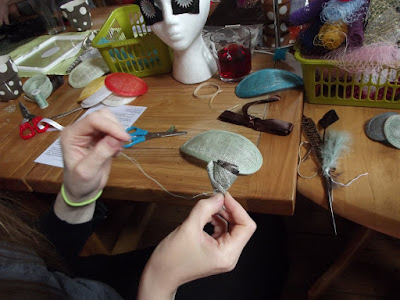 |
| Random Fall, continuous line drawing |
After a bit of a break it was really good to get my Life Drawing sessions restarted this month. I enjoyed being back in the Prism Arts studio with a clear focus and time just to draw. Although I love drawing and regard it as a really important part of my practice it can sometimes be hard to fit it in, other (usually mundane) activities seem to take priority so I appreciate the life drawing sessions as time set aside specifically to draw and nothing else.
 |
| Continuous Line |
 |
| Continuous Line |
 |
| Continuous Line |
It was also good to see my regular attendees as well and a model who has been with us from the start but since the change of day has been unable to sit for us. It was great to see her again and I particularly enjoyed the chance to utilise her 'random fall' modelling approach (it is exactly what it sounds like, she falls randomly and we draw the results!)
 |
| Practising drawing the face |
 |
| Practising drawing the face |
 |
| Practising drawing the face |
Although during the sessions we are mostly quiet, with us all focused on our drawing, part of the appeal of life drawing is the social side; being with other people doing the same thing. I think this is probably one of the reasons that it was identified as one of the best ways to keep dementia at bay, according to a recent BBC radio programme (and a growing body of scientific research.) The other critical factor is the hand-eye-brain co-ordination that life drawing involves. As I have mentioned many times before life drawing seems to demand a certain type of focus, it improves your drawing in a way other drawing doesn't seem to. It is, for me, a kind of meditative process that allows me to almost bypass the concious brain and allow my eyes and hands to 'talk' directly to each other.
 |
| Continuous line |
 |
| Continuous line |
Despite having had a not great day I found that once I'd got to the session and got everything set up I was looking forward to drawing and as soon as we started I immediately relaxed and began to enjoy the session and drawing. I like the sound and the feel of the pen gliding across the paper, seeing a tangle of lines arrange themselves into something resembling the human body.
 |
| Continuous line |
Drawing is seeing and creating at the same time, expressing and recording what's in front of you. When I'm life drawing I don't think about the outcome, I try and just enjoy the process and not concern myself with what it will be or look like. I think this approach actually improves my drawing as it relieves any pressure and as I'm not expending energy worrying I can use that energy to create my drawing.
 |
| Random fall |
 |
| Random fall |
 |
| Hanging off a chair |
Recently, in the spirit of facing up to challenges, I've been trying to draw faces more as this is my weakest point. I did several face studies this evening, with varying degrees of success. Overall though I think I am improving and I'm certainly feeling more confident about not cutting the heads off my drawings! Next session I may even try some different media...
































































